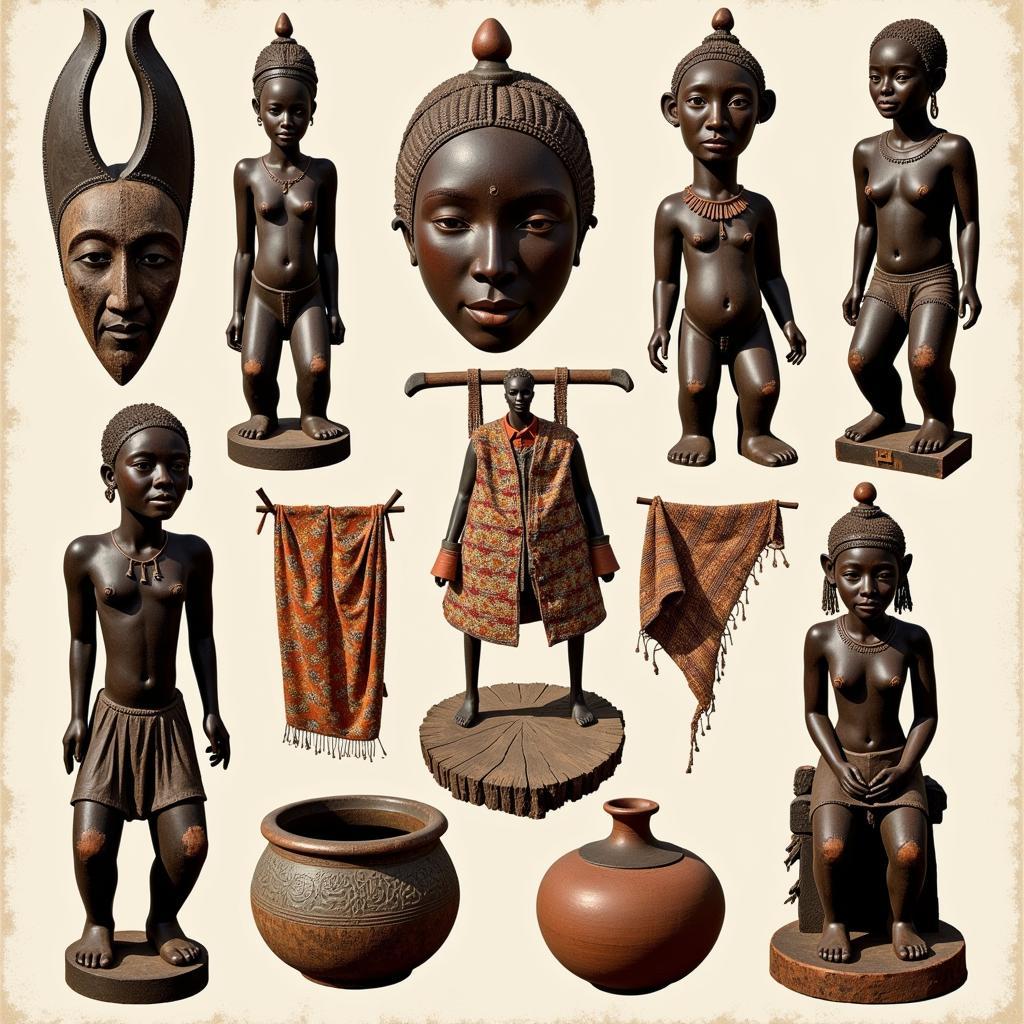African Art Designs: A Journey Through the Continent’s Visual Heritage
African Art Designs are a rich tapestry of cultural expression, encompassing a diverse range of styles, motifs, and techniques that reflect the continent’s vast history, spirituality, and social structures. From the intricate wood carvings of West Africa to the vibrant textiles of East Africa and the bold beadwork of Southern Africa, African art designs offer a captivating glimpse into the continent’s soul. This article delves into the captivating world of African art designs, exploring their history, significance, and enduring influence on contemporary art and design.
A Legacy Etched in Time: The History of African Art Designs
The history of African art designs stretches back millennia, with evidence of artistic expression dating back to the dawn of humanity. Ancient rock paintings found in caves across Africa, such as the Tassili n’Ajjer in Algeria and the Blombos Cave in South Africa, provide a glimpse into the early artistic traditions of the continent. These paintings depict animals, humans, and abstract designs, offering valuable insights into the lives and beliefs of early African societies.
With the rise of powerful kingdoms and empires across Africa, such as ancient Egypt, Kush, Axum, and Great Zimbabwe, African art designs flourished. These civilizations developed sophisticated artistic traditions, evident in their monumental architecture, intricate sculptures, and elaborate jewelry.
The Power of Symbolism in African Art Designs
One of the defining characteristics of African art designs is the profound use of symbolism. Every motif, color, and material holds a specific meaning, often representing spiritual beliefs, social hierarchies, or ancestral connections. For instance, the use of animal imagery is prevalent in many African cultures, with animals often representing specific virtues or embodying the spirits of ancestors.
Diverse Forms and Expressions: Exploring Different Types of African Art Designs
African art designs encompass a wide range of artistic forms, each with its unique characteristics and cultural significance. Some of the most prominent types of African art designs include:
-
Masks: Masks hold a special place in many African cultures, often used in rituals, ceremonies, and performances. They are typically carved from wood, adorned with intricate details, and often represent spirits, ancestors, or mythological beings.
-
Sculptures: African sculptures, often carved from wood or cast in bronze, showcase the continent’s artistic mastery. These sculptures range from small, personal figures to monumental works that celebrate rulers or commemorate important events.
-
Textiles: From the intricately woven kente cloth of Ghana to the colorful Maasai shukas of Kenya, African textiles are renowned for their vibrant colors, bold patterns, and symbolic designs. These textiles often play important roles in cultural ceremonies and social status.
-
Beadwork: Beadwork is another prominent form of African art design, particularly in Southern Africa. Intricate beadwork is used to create jewelry, clothing accessories, and decorative objects, often incorporating symbolic patterns and color combinations.
-
Pottery: African pottery traditions date back thousands of years, with each region developing distinctive styles and techniques. From the earthenware pots of North Africa to the elaborately decorated ceramics of West Africa, African pottery serves both functional and artistic purposes.
African Art Designs Today: A Legacy of Inspiration
The influence of African art designs continues to resonate in contemporary art, fashion, and design. Artists and designers around the world draw inspiration from the bold aesthetics, symbolic language, and cultural richness of African art designs.
Conclusion
African art designs offer a captivating journey through the continent’s rich cultural heritage. From ancient rock paintings to contemporary art forms, African art designs continue to inspire and captivate audiences worldwide. By understanding the history, symbolism, and diverse expressions of African art designs, we can gain a deeper appreciation for the continent’s creativity and its enduring legacy in the world of art and design.
FAQs About African Art Designs
1. What are the most common materials used in African art designs?
Common materials include wood, bronze, clay, textiles, beads, and natural pigments.
2. What is the significance of masks in African art?
Masks often represent spirits, ancestors, or mythological beings and are used in rituals, ceremonies, and performances.
3. How has African art influenced contemporary art and design?
African art’s bold aesthetics, symbolic language, and cultural richness have inspired artists and designers worldwide.
4. Where can I learn more about African art designs?
Museums, art galleries, cultural centers, and online resources offer a wealth of information.
5. Are there opportunities to purchase authentic African art?
Yes, reputable art dealers, galleries, and fair trade organizations specialize in ethical sourcing and sales.
For further insights into African culture and design, explore our related articles on the African boutique app and the latest trends in African blouses 2018.

